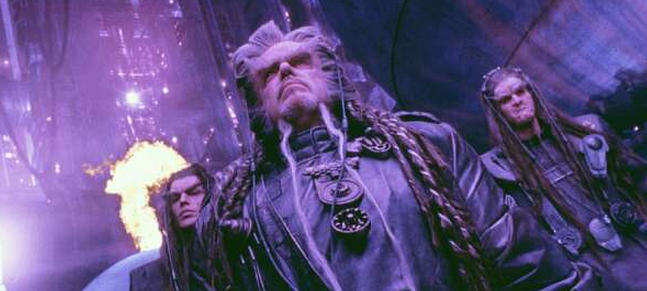BASIC CAMERA & VIDEO TERMINOLOGY
1. SHOT
A shot is a length of film or video unbroken by a cut or by shutting the camera off.
There are many different types of shots. Here are the basic ones:
a. CLOSE UP (CU): when of a person, usually a shot of the head and shoulders
EXTREME CLOSE UP (ECU): If shooting a person's face an ECU might only reveal the person's eyes.
Example of Close Up:

b. MEDIUM SHOT (MS): when of a person, usually from the waist up
MEDIUM CLOSE UP (MCU): A shot that falls somewhere in between a medium shot and a close up.
Example of Medium Shot:
c. WIDE SHOT/LONG SHOT: in the case of a shot of a person, the whole person is shown from head to toe.
EXTREME LONG SHOT: this would show the entire person within the environment. The person would be a very small part of the frame.
Example of Extreme Long Shot:
c. TRACKING SHOT: a dolly shot in which the camera moves with a moving subject, keeping it in frame.
Nowadays steadicam tracking shots have become more popular
Here is an example of a steadicam tracking shot from True Detective:
https://www.youtube.com/watch?v=s_HuFuKiq8U
2. CAMERA MOVEMENT
a. PAN: a camera movement in which the camera is pivoted along its horizontal axis (left to right, right to left)
b. TILT: a camera move in which the camera pivots up or down along its vertical axis
Check out this link for use of camera movement in Breaking Bad:
https://vimeo.com/91688801
3. CAMERA ANGLES
a. HIGH ANGLE SHOT: a shot taken with the camera at an angle above the subject.
b. LOW ANGLE SHOT: a shot taken with the camera at an angle below the subject.
c. DUTCH ANGLE: a shot composed so that the image is tilted in the frame.
*THE 180 DEGREE RULE*
This is a very important rule. You must have an idea of what this means before you start shooting.
Before you start shooting, you will establish an imaginary 180 degree line and not cross this line with the camera. The camera position must remain on one side of that line. If the camera crosses the line, it will get confusing in the editing.
We will talk more about this in class but here is a video you can watch in the meantime: https://www.youtube.com/watch?v=HinUychY3sE





No comments:
Post a Comment